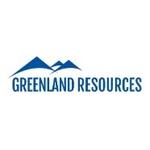The Island Gold mine near Dubreuilville, bout 85 km north of Wawa, Ont., is returning higher grades the deeper drilling goes. Alamos Gold Mines (TSX:AGI) bought the mine in 2017, and two years later had doubled reserves to 3.7 million oz. of gold. By 2022 a zone of high-grade mineralization was intersected west and east of the mine and at depth, bringing reserves to 5.3 million oz. of gold with grades of nearly 11 g/t gold.

Today, reserves and resource have almost doubled again. The mine has proven and probable reserves of 4.1 million tonnes grading 10.12 g/t gold and containing 1.3 million oz. The measured and indicated resources are 1.1 million tonnes grading 8.12 g/t gold, containing 286,300 oz., and the inferred resource is 7.9 million tonnes at 13.59 g/t gold, containing almost 3.5 million oz.
The decision was made to proceed with the third phase of expansion to reach annual output of 287,000 oz. of gold. Work includes various infrastructure investments including the installation of a shaft, paste fill plant, and an expansion of the mill and tailings facility. Construction is to be finished in 2026, and the mine will continue to operate until at least 2038. Cost of the expansion is $756 million, but all-in sustaining cost will drop to US$576 per oz. beginning in 2026.
The hoist is installed, and the headframe is nearly complete. The sinking of the new shaft to 1,373 metres will begin by year end. Moving from trucking ore up a ramp to hoisting it up the shaft will boost the mining rate to 2,400 t/d from 1,200 t/d. The shaft design will allow further deepening to 2,000 metres.
Alamos also enjoys significant regional exploration potential thanks to acquiring Trillium Mining and Manitou Gold since it purchased Island Gold.
Learn more or find the 2022 technical report for Island Gold on www.AlamosGold.com.




